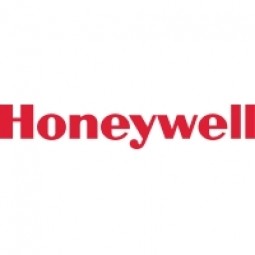Customer Company Size
Large Corporate
Product
- Honeywell Two-Way Cellular-Connected Handheld Blood Glucose Meter
Tech Stack
- Machine-to-Machine (M2M) Communication
- Cellular Connectivity
Implementation Scale
- Enterprise-wide Deployment
Impact Metrics
- Revenue Growth
- Customer Satisfaction
- Digital Expertise
Technology Category
- Networks & Connectivity - Cellular
- Analytics & Modeling - Machine Learning
Applicable Industries
- Healthcare & Hospitals
Use Cases
- Remote Patient Monitoring
- Machine Condition Monitoring
Services
- System Integration
About The Customer
The customer is a global healthcare device manufacturer specializing in helping people manage chronic conditions, particularly diabetes. They produce devices that transmit glucose levels and other pertinent information in real time to a network of providers. The company has a significant presence in the healthcare market and aims to expand its product offerings and services. With a focus on innovation and customer satisfaction, the company is dedicated to improving the quality of life for individuals with chronic conditions through advanced medical devices.
The Challenge
The global healthcare device manufacturer faced the challenge of quickly filling thousands of pre-release orders for a newly approved glucose monitoring device. Additionally, they needed to prepare for the successful deployment of future healthcare devices by establishing a partnership with an experienced managed mobility services provider. The company was experiencing overwhelming success and needed to ensure that they could meet the high customer demand for their new diabetes monitoring device.
The Solution
To address the overwhelming success and high demand for their new diabetes monitoring device, the company engaged Honeywell to deploy a two-way, cellular-connected handheld blood glucose meter. This device falls into the growing category of machine-to-machine (M2M) products, which are networked devices that communicate without human intervention, often as part of remote monitoring. Honeywell, with its extensive experience in M2M, leveraged its wide-ranging product expertise to deploy 100,000 devices. This partnership allowed the healthcare device manufacturer to quickly and efficiently meet the pre-release and new orders for their glucose monitoring device.
Operational Impact
Quantitative Benefit

Case Study missing?
Start adding your own!
Register with your work email and create a new case study profile for your business.
Related Case Studies.

Case Study
Hospital Inventory Management
The hospital supply chain team is responsible for ensuring that the right medical supplies are readily available to clinicians when and where needed, and to do so in the most efficient manner possible. However, many of the systems and processes in use at the cancer center for supply chain management were not best suited to support these goals. Barcoding technology, a commonly used method for inventory management of medical supplies, is labor intensive, time consuming, does not provide real-time visibility into inventory levels and can be prone to error. Consequently, the lack of accurate and real-time visibility into inventory levels across multiple supply rooms in multiple hospital facilities creates additional inefficiency in the system causing over-ordering, hoarding, and wasted supplies. Other sources of waste and cost were also identified as candidates for improvement. Existing systems and processes did not provide adequate security for high-cost inventory within the hospital, which was another driver of cost. A lack of visibility into expiration dates for supplies resulted in supplies being wasted due to past expiry dates. Storage of supplies was also a key consideration given the location of the cancer center’s facilities in a dense urban setting, where space is always at a premium. In order to address the challenges outlined above, the hospital sought a solution that would provide real-time inventory information with high levels of accuracy, reduce the level of manual effort required and enable data driven decision making to ensure that the right supplies were readily available to clinicians in the right location at the right time.

Case Study
Gas Pipeline Monitoring System for Hospitals
This system integrator focuses on providing centralized gas pipeline monitoring systems for hospitals. The service they provide makes it possible for hospitals to reduce both maintenance and labor costs. Since hospitals may not have an existing network suitable for this type of system, GPRS communication provides an easy and ready-to-use solution for remote, distributed monitoring systems System Requirements - GPRS communication - Seamless connection with SCADA software - Simple, front-end control capability - Expandable I/O channels - Combine AI, DI, and DO channels

Case Study
Driving Digital Transformations for Vitro Diagnostic Medical Devices
Diagnostic devices play a vital role in helping to improve healthcare delivery. In fact, an estimated 60 percent of the world’s medical decisions are made with support from in vitrodiagnostics (IVD) solutions, such as those provided by Roche Diagnostics, an industry leader. As the demand for medical diagnostic services grows rapidly in hospitals and clinics across China, so does the market for IVD solutions. In addition, the typically high cost of these diagnostic devices means that comprehensive post-sales services are needed. Wanteed to improve three portions of thr IVD:1. Remotely monitor and manage IVD devices as fixed assets.2. Optimizing device availability with predictive maintenance.3. Recommending the best IVD solution for a customer’s needs.

Case Study
HaemoCloud Global Blood Management System
1) Deliver a connected digital product system to protect and increase the differentiated value of Haemonetics blood and plasma solutions. 2) Improve patient outcomes by increasing the efficiency of blood supply flows. 3) Navigate and satisfy a complex web of global regulatory compliance requirements. 4) Reduce costly and labor-intensive maintenance procedures.

Case Study
Cloud-based healthcare solution for Royal Philips
Royal Philips wanted to launch its cloud-based healthcare solution HealthSuite Digital Platform in China to deliver services to help cope with challenges related to urbanization and population growth. Philips wanted to achieve this goal by combining mobile, cloud computing and big data technologies. To bring this platform and product to market, Philips required cloud computing and local technical service capabilities in China, in addition to a flexible IT infrastructure that could handle user requests.








